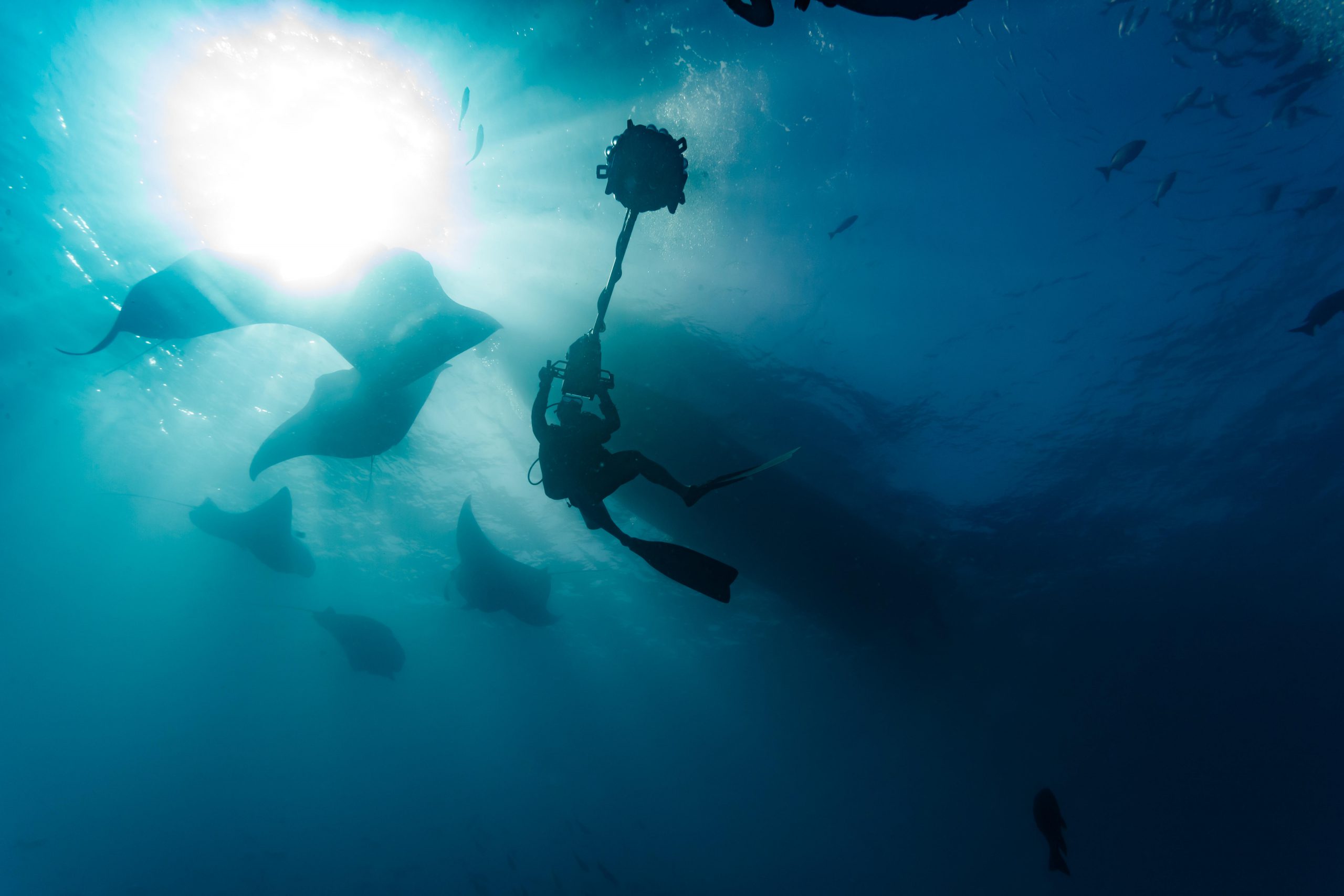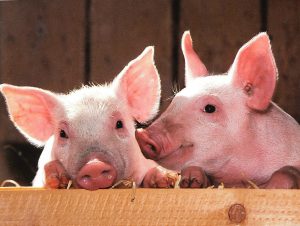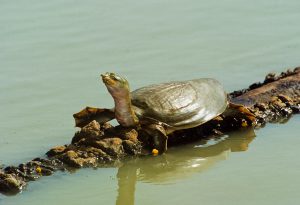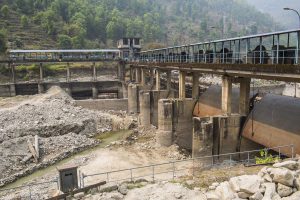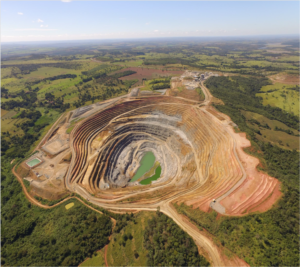The night-time ballet of the mobula ray, that beautiful scene in Blue Planet II when hundreds of rays feed off glowing plankton in the Sea of Cortez, or the Asian sheepshead wrasse fish, which changes its sex to avoid unwanted advances. Everyone who watched the 2018 BBC series has a memorable scene. But perhaps it is the final episode that resonates most. The one where David Attenborough and his crew turn to the camera, look the viewer square in the eye, and deliver a stark warning about human destruction of the ocean.
It was watched by 14 million UK viewers, led to a surge in marine charity sign-ups and donations, and became a watershed moment in documentary film. Previously accused of glossing over human harm to the natural world for the sake of a pristine shot, the BBC raised pertinent questions about the role of documentary film in a world facing acute environmental crises. Sold to more than 30 countries, Blue Planet’s phenomenal success proved that social responsibility and artistic sensibility are not incompatible. Documentary-makers can be more than impartial observers – indeed, perhaps they should be?
The “Blue Planet effect” is part of a wider transformation. Tooled with new technology, working on crowd-funded budgets, the next generation of filmmakers scattered across the globe are plugging into the environmental loss they are witnessing around them. By examining the impacts of climate change, biodiversity loss and urbanisation, these documentary-makers serve an audience increasingly disconnected from nature yet mobilised by environmental causes, and who do most of their viewing on smartphones.
So how do environmental filmmakers see their role shaping up in the era of the Anthropocene, and what impacts do these programmes have on the way people think and live?
Victoria Bromley, a producer and director for the BBC’s Natural History Unit in the UK, has devoted her career to raising the profile of rare and endangered species. One of her earliest films was about Siberian tigers at a time when there were only 300 left in the world due to habitat loss from intensive logging and development in Russia's Far East.
Despite being aired in English, the film was accessible online in Russia and led to Vladimir Putin making a personal visit to the town from where some cubs were later released.
Last year, Bromley worked on a documentary about pangolins, one of the world’s most-endangered and least-known species. Small, gentle and covered in scales, this adorable mammal has been driven to the verge of extinction by poachers supplying demand for the traditional Chinese medicine market. Their keratin-rich armour is thought to cure anything from acne to deafness.

Confiscated pangolin scales set to be destroyed in Cameroon in 2017. (Image: Kenneth Cameron / USFWS)
Chinese consumer demand has been driving trade within Southeast and South Asia since the mid 1990s, but today trade from Africa is picking up. Reaching audiences in China, where pangolin scales are still legally prescribed in hospitals, was especially important to this project.
“The challenge was to introduce people to this species but also deliver the realisation that it could be gone in a few years if things don’t change,” says Bromley.
At the heart of the story is the relationship between South African conservationist Maria Diekmann and Honey Bun, a pangolin she rescued as a baby. The characterful, armadillo-like creature tottering around a house on its hind legs cuts a stark contrast with the images of dead pangolins we're used to in news clips.
“Nature documentaries can help people imagine an animal, understand it, and be excited by it as a living being. It doesn’t sound a lot to say ‘raising a profile’ but it can have a huge impact to have that recognition.”
WildAid released a Chinese video featuring the films’ stars Honey Bun and the Chinese model and actress Angelababy, which has been watched 40 million times, receiving 55,000 comments, in China:
“This campaign has sparked discussion about the issue. These online comments frequently lead to more media coverage. Without these films and campaigns, I don’t think there would be a fraction of the attention to these issues,” says Steve Blake, WildAid’s chief representative in China.
Bromley believes that as society becomes increasingly urban, our alienation from nature is impacting on mental wellbeing. Over half the world’s population now live in urban environments, with this expected to rise to 68% by mid-century, according to the United Nations.
“We are integrally connected to nature and we are becoming increasingly removed from it. There have been studies that show wildlife documentaries improve your happiness,” she says.
In China, environmental film is not recognised as a genre in its own right. The domestic film industry is strictly regulated by the government and the few films about the environment that are produced rarely garner a wide following. A notable exception being “Under the Dome”, the 2015 documentary made by Chinese reporter Chai Jing about air pollution, which was pulled down by government censors shortly after its release. “We certainly need more filmmakers to make films on this topic. I think it’s healthy to have… a bigger variety and diversity,” says Jian Yi, a Chinese filmmaker based in Beijing.
In 2013, in partnership with US think-tank Brighter Green, he made the groundbreaking documentary “What’s for dinner?”, which lifted the lid on animal farming practices in rural China. The film set out to answer two questions: Can people in the developing world eat as much meat and dairy as people in the industrialised countries without destroying the planet? And do they really want to?
“For me, it was really eye-opening to read a policy paper on China’s meat consumption and its impact on the environment. I was very shocked to read the facts,” he says. “What really changed us [the crew] was the visuals and the sound that we picked up at the scene. The sound artist remembered vividly what she heard from the days on the farm. She had to listen to all the terrible sounds, the screaming of the pigs, which made a huge psychological impact on her.”
"It is no wonder that people like me decided to go vegetarian after seeing such a documentary… I guess that is the power of a documentary film,” he says, adding that he believes the release chimed in with the beginnings of a modern plant-based food movement in Chinese cities.
While rising meat in diets in developing countries has raised concerns, the greatest amount of meat – often from factory farms – is consumed in developed countries. In other words developing countries like China and India have now started to catch up to an unsustainable practice pioneered by developed countries. This was made clear by Wanqing Zhou, of Brighter Green, in her article The Triangle: Factory Farming in the U.S, China and Brazil.
Gayatri Parameswaran is a journalist and maker of documentary and virtual reality (VR) films. Currently based in Berlin with NowHere Media, she has reported in over 25 countries, from witch hunting in India, to political satire in Myanmar, to the struggles of the transgender community in Nicaragua.
In 2016, she was inspired by the “The Click Effect”, an Emmy-nominated 360 degree documentary about the protection of the ocean’s largest predators. It follows two marine scientists, Fabrice Schnoller and Fred Buyle, as they free dive 30 metres under the ocean's surface in Grand Cayman to swim alongside dolphins and sperm whales, capturing the secret of their “click” communication.
Recently she worked on a project to save the Fishing cat, which is being threatened by the loss of its mangrove and wetlands habitat in northern India and Sri Lanka, highlighting the issue to international audiences. Parameswaran says VR is a powerful form of immersive storytelling with wide application for environmental projects.
“With VR, you are able to build that intimate relationship between the producers and the audience. It is an opportunity to step into the shoes of the subject and implant the user in [their] mind.” She predicts the next frontier for storytelling is augmented reality (AR), a technology that allows users to superimpose information – sounds, images and text – on real-world scenes, usually through a smartphone camera and app.
“AR keeps the environment around you, so you keep your context, but adds a layer of input on top, which can be very powerful.” The most common way to access AR is through a smartphone, which keeps production costs low, unlike with VR, says Parameswaran.
As the impacts of climate change and human development unfold across the world, it seems inevitable that filmmakers are recalibrating and turning their craft to recording, analysing and questioning the fate of the natural world, to which our own is bound.
